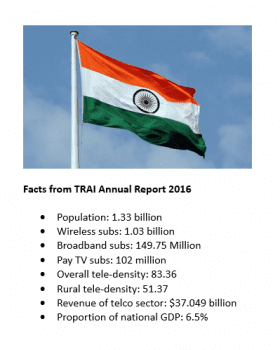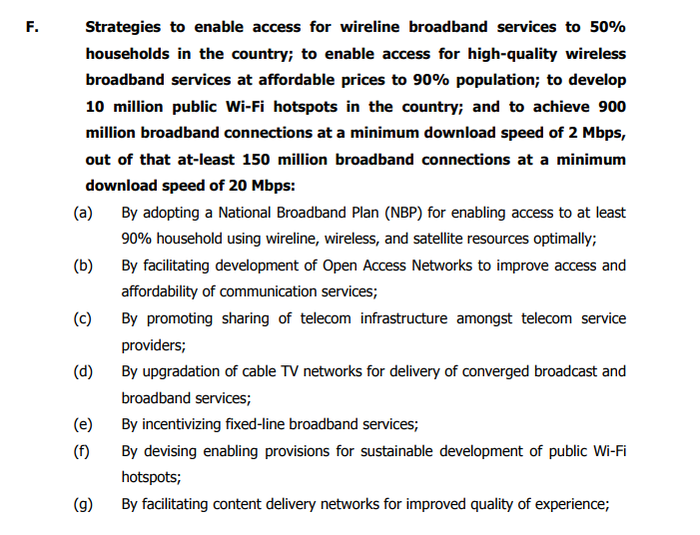India launches telecom policy consultation aiming for $100bn investment
The Telecom Regulatory Authority of India (TRAI) has kick-started a consultation process to develop its National Telecom Policy for 2018, intended to launch India up the global digital rankings.
January 3, 2018

The Telecom Regulatory Authority of India (TRAI) has kick-started a consultation process to develop its National Telecom Policy for 2018, intended to launch India up the global digital rankings.
The consultation itself is a process the regulator goes through every couple of years to redefine its mission and objectives. Previous consultations have taken place in 1994, 1999, 2004 and 2012, with each redrawing the technology roadmap, setting out new ambitions and milestones. The process seemingly works as India has become one of the fastest growing technology markets worldwide.
Looking though the consultation paper, you can see why; it’s logical, comprehensive, written in simple language and steadily achievable. Perhaps there are a few of the established markets who could learn a thing or two here about setting realistic aims, as well as a rational way to achieve them.
 “Recognizing that provision of world class telecommunications infrastructure is the key to rapid socio-economic growth of the country, the Government has been announcing its telecom policy statements on a regular interval since the onset of market liberalization in the country in the early 1990s,” the paper states.
“Recognizing that provision of world class telecommunications infrastructure is the key to rapid socio-economic growth of the country, the Government has been announcing its telecom policy statements on a regular interval since the onset of market liberalization in the country in the early 1990s,” the paper states.
“(The) DoT (Department of Telecoms), on its web-site, has stated that the new telecom policy will be governed by the key guiding principle of alignment with the national vision. Its major themes will, inter-alia, be regulatory & licensing frameworks impacting the telecom sector, connectivity-for-all, quality of services, ease of doing business, and absorption of new technologies including 5G and IoT.”
The mission here is to make India a country which can compete in the global digital market. While the government has praised itself on the work to date, it recognises India is outside the tent looking in on the connected commanders. Connectivity is an enabler of socio-economic development, and while India is still a young nation in terms of telco development, the strides it has made in the last couple of years is staggering.
In terms of the objectives, there are quite a few, and while they are ambitious, none are completely out of reach. The deadline will be 2022, when the country will be celebrating its 75th year of independence, by which time the following areas will hopefully be a reality:
Increase rural tele-density to 100 %
To provide data connectivity of at least one Gbps speed to all Gram Panchayats (local self-governance system in India)
Wireline broadband services to 50% households in the country
High-quality wireless broadband services at affordable prices to 90% population
900 million broadband connections at a minimum download speed of 2 Mbps, 150 million broadband connections at a minimum download speed of 20 Mbps
Develop 10 million public Wi-Fi hotspots in the country;
Average speed of 20 Mbps for wireless, and 50 Mbps for wireline internet connectivity
Launch India into the top-50 nations in international rankings for network readiness, communications systems, and services
Enable access for connecting 10 billion IoT/ M2M sensors/devices
Attract an investment equivalent to £100 billion in communication sector
Become net positive in international trade of communication systems and services
For every single objective which is set forward in the plan, the team has also laid out several ways in which it can be achieved (see below). This level of transparency and logic is practically unheard of in European nations, where sky-high ambitions are set, while the plan to get there remains shaky and full of holes.
Of course, there are still details which need to be filled in, but this is the reason for the consultation paper. B taking this comprehensive and transparent approach to advancing digital ambitions of a country, you can see why India is growing so rapidly as a digital society.

About the Author
You May Also Like










.png?width=300&auto=webp&quality=80&disable=upscale)


_1.jpg?width=300&auto=webp&quality=80&disable=upscale)